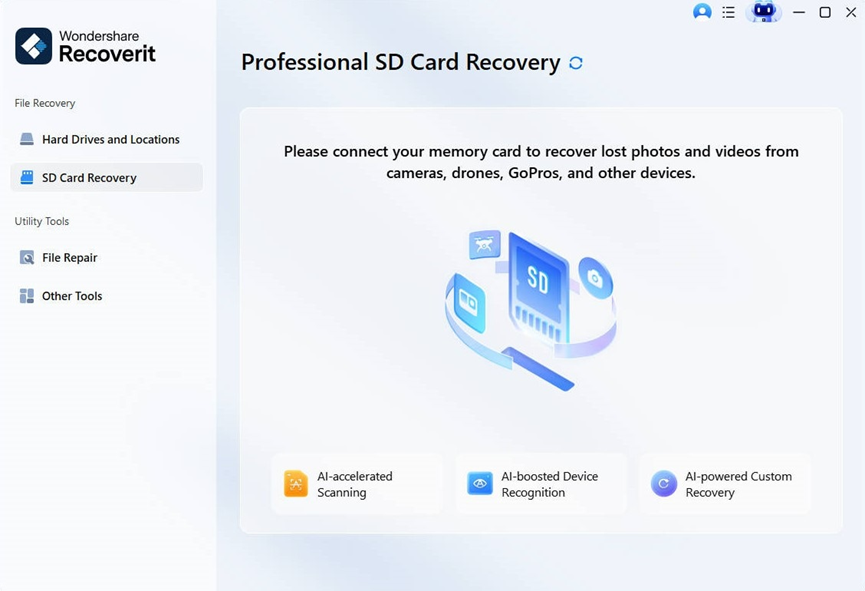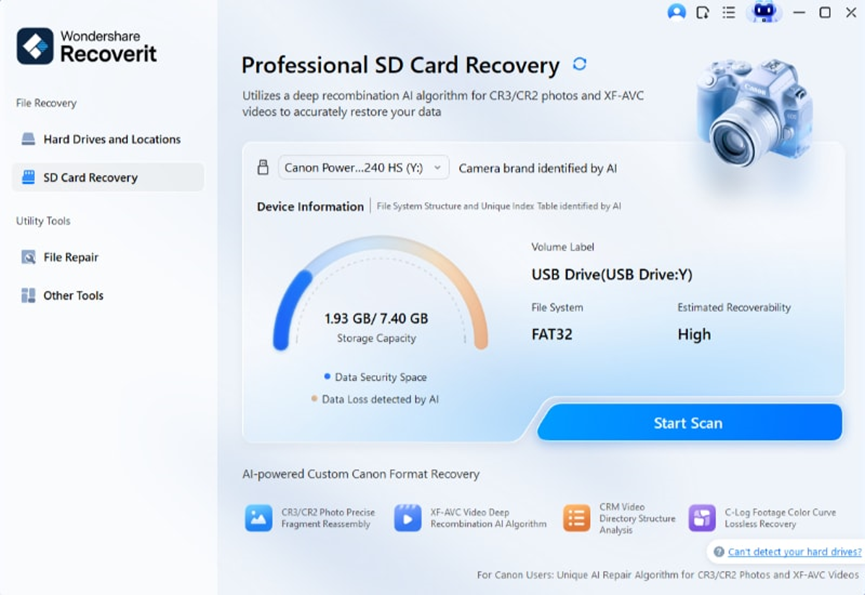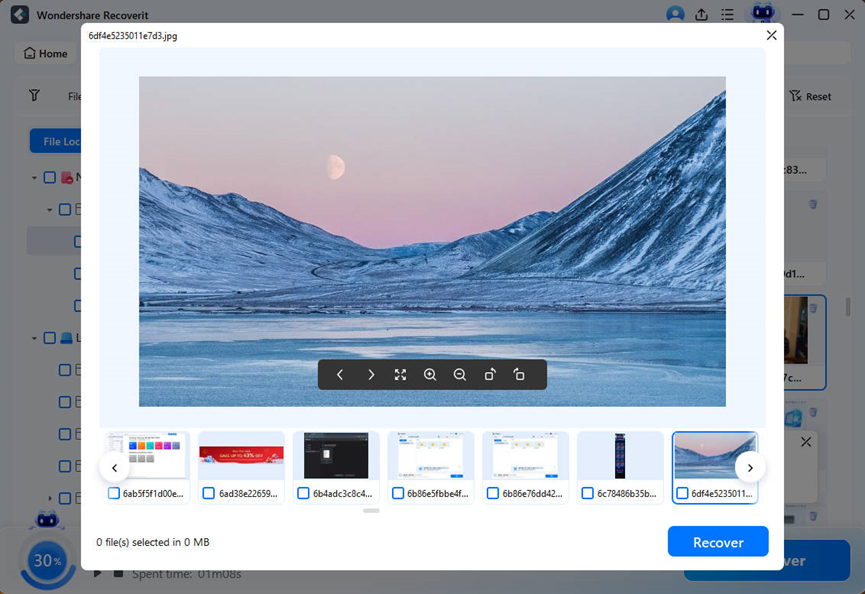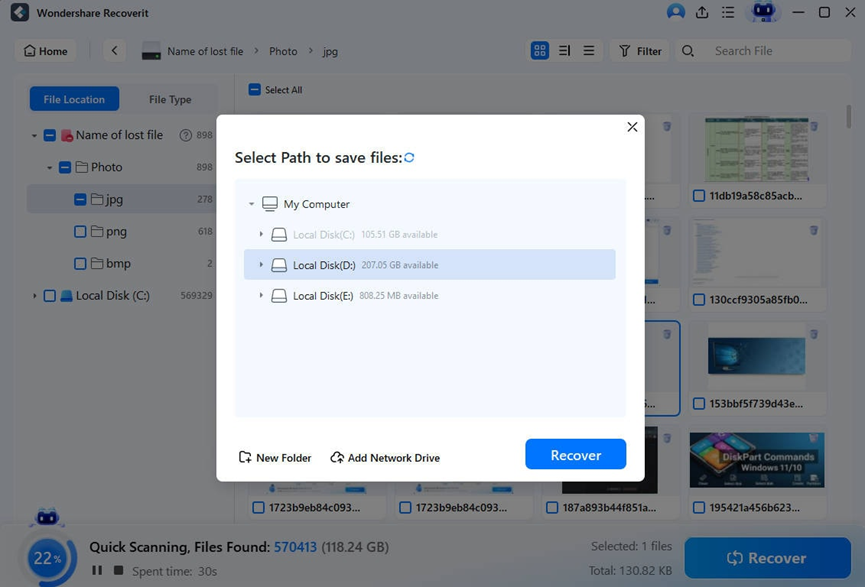Introduction
Your dash cam is a crucial safety tool, constantly recording footage to protect you during accidents, insurance claims, and legal issues. It acts as a silent, essential witness, capturing all the key moments. But when your dash cam’s SD card fails, gets corrupted, or is accidentally formatted, you risk losing that vital video evidence. Losing this footage could cost you thousands in claims or legal protection.
Learning how to perform dash cam SD card recovery is therefore essential. It can save you from major complications and ensure you have that important video evidence exactly when you need it.
Common Reasons for Dash Cam Data Loss
- Loop recording overwrites – Older footage automatically deleted when storage capacity is reached
- Power supply issues – Sudden power loss during recording causing file corruption or incomplete saves
- Extreme temperature exposure – Hot car interiors or cold weather damaging SD card components
- Vibration damage – Constant vehicle vibrations affecting card connections and internal components
- Accidental formatting – Mistakenly formatting the card during dash cam settings adjustment
- File system errors – Improper shutdowns or ejection corrupting the card’s directory structure
- SD card aging – Wear and tear from continuous read/write operations degrading performance
- Firmware conflicts – Dash cam software updates causing compatibility problems with existing data
Recover Videos from Dash Cam SD Card Using Wondershare Recoverit
Wondershare Recoverit offers specialized capabilities for recovering dash cam footage, understanding the unique challenges posed by continuous loop recording systems and various video formats used by different automotive recording devices. This free data recovery software supports comprehensive recovery from all major dash cam brands and can handle various file formats including MP4, AVI, MOV, and TS files commonly used in automotive recording applications.
The software’s AI-powered advanced scanning technology can detect and recover fragmented video files that may have been partially overwritten by loop recording systems. Recoverit also supports recovery of both front and rear camera footage, parking mode recordings, and emergency event files that dash cams automatically protect during incidents.
Step-by-Step Dash Cam Recovery Process:
Step 1: Download and Install Recoverit.
Download Wondershare Recoverit from the official website and install it on your computer. Avoid installing on the corrupted SD card to prevent further data loss.

Step 2: Remove and Connect SD Card.
Carefully remove the SD card from your dash cam and insert it into a quality card reader. Connect to your computer ensuring stable connection throughout the recovery process.
Step 3: Select Dash Cam SD Card.
Launch Recoverit and choose your dash cam’s SD card from the “SD Card Recovery” list. Click “Scan” to initiate the recovery process.

Step 4: Deep Scan for Video Files.
Allow Recoverit to perform a comprehensive scan of your SD card. The software will search for recoverable video files.

Step 5: Preview Recovered Footage.
Review the discovered video files using Recoverit’s preview function. This helps verify the integrity of recovered dash cam footage and ensures you’re recovering the correct footage file.

Step 6: Save to Computer.
Select the desired video files and recover them to your computer’s hard drive. Create organized folders by date or incident type for easy future reference.

More Tips for Recovering Videos from Dash Cam
- Act quickly after data loss – Minimize additional recording to prevent overwriting recoverable files
- Use professional card readers – Avoid built-in computer card slots that may cause connection issues
- Check multiple file types – Dash cams may save emergency files in different formats or locations
- Recover emergency events first – Prioritize G-sensor activated recordings containing crucial evidence
- Verify video timestamps – Ensure recovered footage corresponds to correct time periods
- Test playback compatibility – Check recovered videos in multiple players to ensure proper functionality
How to Prevent Future Data Loss
- Regular file backups – Download important footage weekly to computer storage
- Use high-endurance SD cards – Choose cards specifically designed for continuous recording applications
- Monitor card health – Replace SD cards showing signs of errors or degraded performance
- Adjust loop recording settings – Configure appropriate segment lengths to balance storage and quality
- Maintain stable power supply – Ensure reliable power connections to prevent sudden shutdowns
- Protect from temperature extremes – Use window tinting or park in shade when possible
Conclusion
Dash cam SD card recovery is crucial for maintaining the protective benefits these devices provide. Whether you’re dealing with corrupted dash cam footage recovery, formatted sd card dash cam issues, or need to recover overwritten dash cam footage, Wondershare Recoverit offers the specialized tools needed to restore your important automotive recordings. By understanding common causes of data loss and implementing preventive measures, you can ensure your dash cam continues to provide reliable protection and evidence when you need it most.

